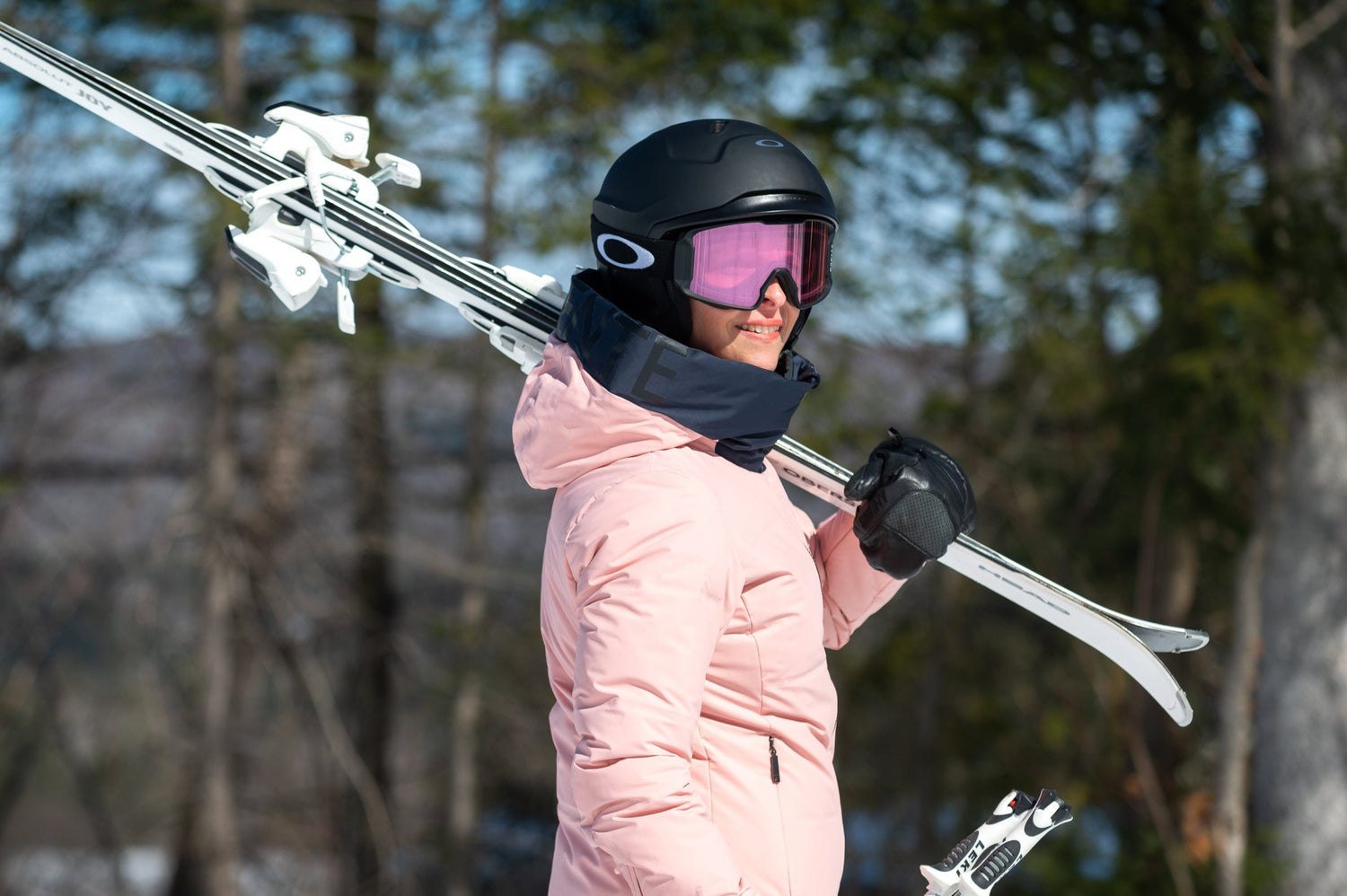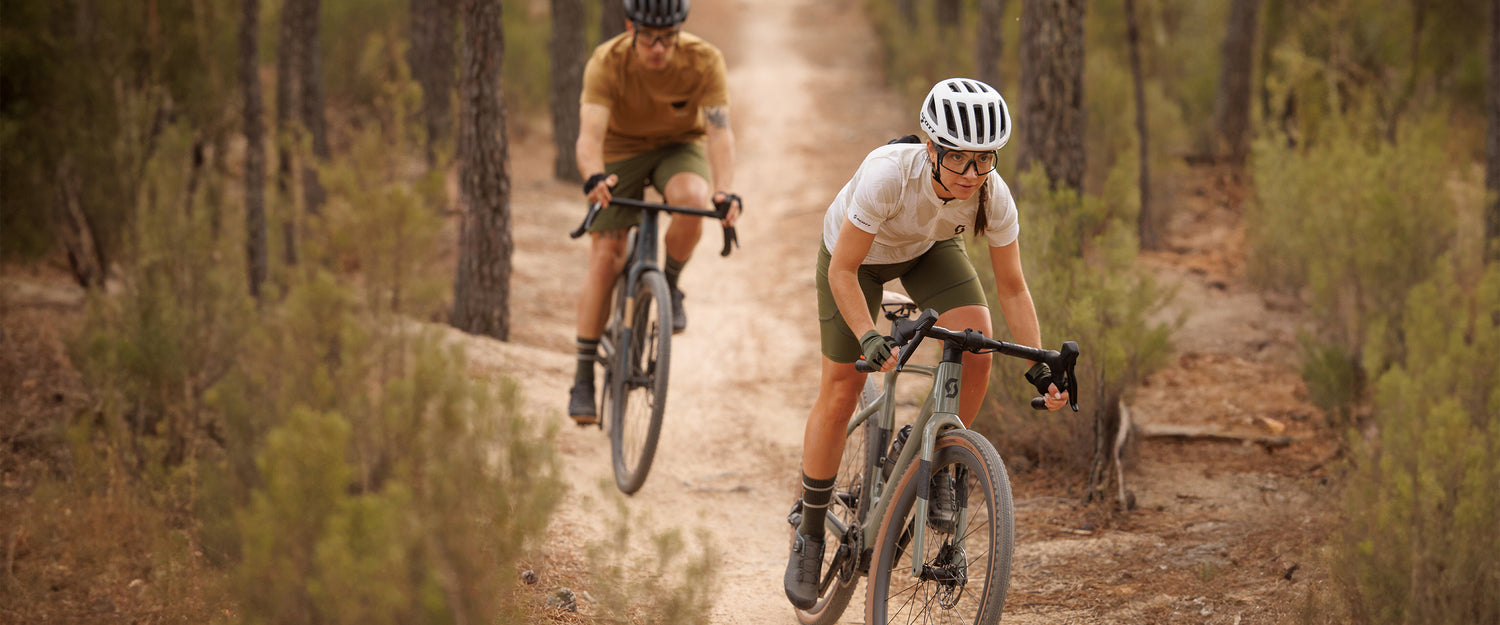Quebec’s cycling routes wind their way over many kilometres of our beautiful province. Asphalt, dirt, gravel, you can find it all. In recent years, gravel bikes have begun to conquer cyclists’ hearts. The reason for their popularity is simple: they’re aimed at anyone looking for a versatile bike capable of riding on many types of surfaces. Plus, they hit the spot for adventurers who want to fully explore the roads on their route without any limits. Thanks to these bikes, thinking outside the box is no longer just an option—it’s a destination.

Why Gravel Bikes?
First, it’s important to fully understand the idea behind their design. Gravel bikes were created for exploring roads that would not be accessible on a standard road bike. They’re versatile, comfortable, more forgiving bikes that give cyclists tremendous freedom on their epic rides.
Gravel Bikes’ Features
Gravel bikes have their own features that help you rack up the kilometres:
-
They’re always equipped with disc brakes, which provide effective, controlled braking in many different conditions.
-
Their geometry optimizes comfort.
-
They have wider, curved handlebars (more stability) for better control on downhills.
-
They have wider tires than a standard road bike for optimal grip on unpaved roads.
-
Their design lets you install various accessories, such as a repair kit or bags.

What should I look for in my first gravel bike?
When it comes to choosing a gravel bike, the main thing is to choose one based on your needs.
What type(s) of terrain do you plan to ride?
If you are going to ride asphalt roads and dirt paths, you need to shop for builds similar to road bikes.
However, if you are mainly going to be riding rugged trails, go with a build closer to a mountain bike.

What type of drivetrain should I choose?
Single chainring
-
This is what you need if you’re planning rides on bumpy trails.
-
It provides a more reliable drivetrain with a lower risk of your chain skipping.
-
This allows you to focus less on your shifters and more on the trail.
-
Since you don’t have a front derailleur, you need to make fewer adjustments, and the risk of breakage is reduced.
Double chainring
-
This is the best choice for you if you plan on doing a lot of riding on roads.
-
It will give you better gear ratios. This means that you can ride at your ideal cadence depending on the wind, the topography and your energy level. Your pedal stroke will have the highest possible efficiency.

What about tires?
Gravel bikes have forks that are wider than those on road bikes but narrower than those on mountain bikes. Wider tires need less pressure. This feature guarantees greater comfort and better traction on rocky paths. If you’re thinking of travelling mainly on asphalt and rock dust surfaces, narrower tires will roll faster.
Here are some recommendations based on tire width:
- 35 mm: The Morin Heights Aerobic Corridor, the Tomifobia Trail and Yamaska Park
- 40 mm: All dirt roads in the Eastern Townships, roads in the Rouge River region and the 100 to B7 route
- 45 mm: The C1 trail and mountain bike trails in Bromont
You can also visit the websites of organizations in your region to discover more amazing routes.

What are the differences between steel, aluminum and carbon?
Steel
- Outstanding shock absorption
- Durable material
- Heavier material
- Poorer energy transmission
Aluminum
- Lightweight material
- Affordable price
- Better torsional rigidity and energy transfer than steel
- A less comfortable ride
- Often damaged faster than steel
Carbon
- Lightest of the three materials
- More responsive
- Enhanced comfort
- More expensive
- Less compatible with accessories
Another aspect to consider is the number of mounting points that allow you to install accessories, such as panniers, bottle cages or mudguards. The right accessories allow you to be fully prepared for all your rides.

Gravel versus Cyclocross Bikes: Is a Gravel Bike a Good Choice?
Sometimes conflated, gravel bikes and cyclocross bikes have some fundamental differences that put them in two distinct categories.
Gravel Bike
- Short or long rides
- Ridden on road or trails
- More versatile than cyclocross bikes
- Comfortable geometry
- Ability to add accessories, such as bags or a repair kit
- Possibility of installing wider tires depending on fork spacing
- More flexible frame that dampens vibrations better
Cyclocross
- Ridden on a closed course with tight turns
- Short but very intense rides
- More aggressive geometry
- Shorter wheelbase
- Higher pedals so you can ride over obstacles
- Lower centre of gravity for more responsiveness
- Tire size usually 33 mm
- Stiffer frame for a more efficient pedal stroke
Gravel bike bikes are definitely the next big thing. Their versatility and comfortable geometry allow them to meet many types of riders’ expectations. They will easily adapt to Quebec’s bike routes, whether they’re in town or on gravel forest roads. The future is bright for gravel bikes.



